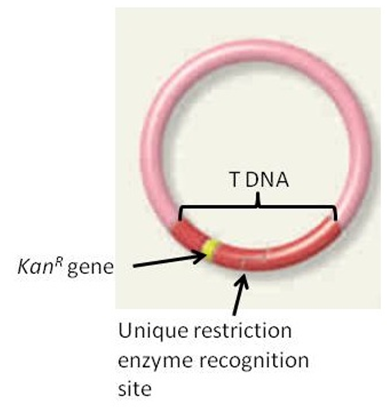The central nervous system first forms during
A. fertilization.
B. cleavage.
C. gastrulation.
D. neurulation.
E. organogenesis.
Answer: D
You might also like to view...
When nutrients are suboptimal for cell growth and division, the cell cycle arrests. At which stage of the cell cycle/checkpoint would you predict this arrest to occur?
A. G1 checkpoint B. G2 checkpoint C. M checkpoint D. G1, G2, and the M checkpoints E. It is not possible to answer with the information given.
You wish to express gene X in soybeans. You clone gene X into a Ti plasmid (shown below), transform the recombinant plasmid into Agrobacterium tumefaciens, treat soybean cells with the transformed A. tumefaciens, and place the cells on medium containing the antibiotics kanamycin and carbenicillin. What is the purpose of these two antibiotics?

A. The carbenicillin ensures that the cells contain a Ti plasmid and the kanamycin ensures that the cells have a recombinant Ti plasmid.
B. The carbenicillin and kanamycin both ensure that the cells picked up recombinant T DNA.
C. The kanamycin ensures that the cells contain recombinant T-DNA and the carbenicillin kills the A. tumefaciens.
D. The carbenicillin ensures that the cells contain recombinant T-DNA and the kanamycin kills the A. tumefaciens.
E. The carbenicillin and kanamycin both kill the A. tumefaciens.
Cerebral cortical association areas link sensory and motor areas
____________________ Indicate whether the statement is true or false.
Foodborne diseases caused by pathogenic Escherichia coli strains are relatively ________ and ________ require hospitalization
a. common / often b. common / rarely c. rare / often d. rare / rarely